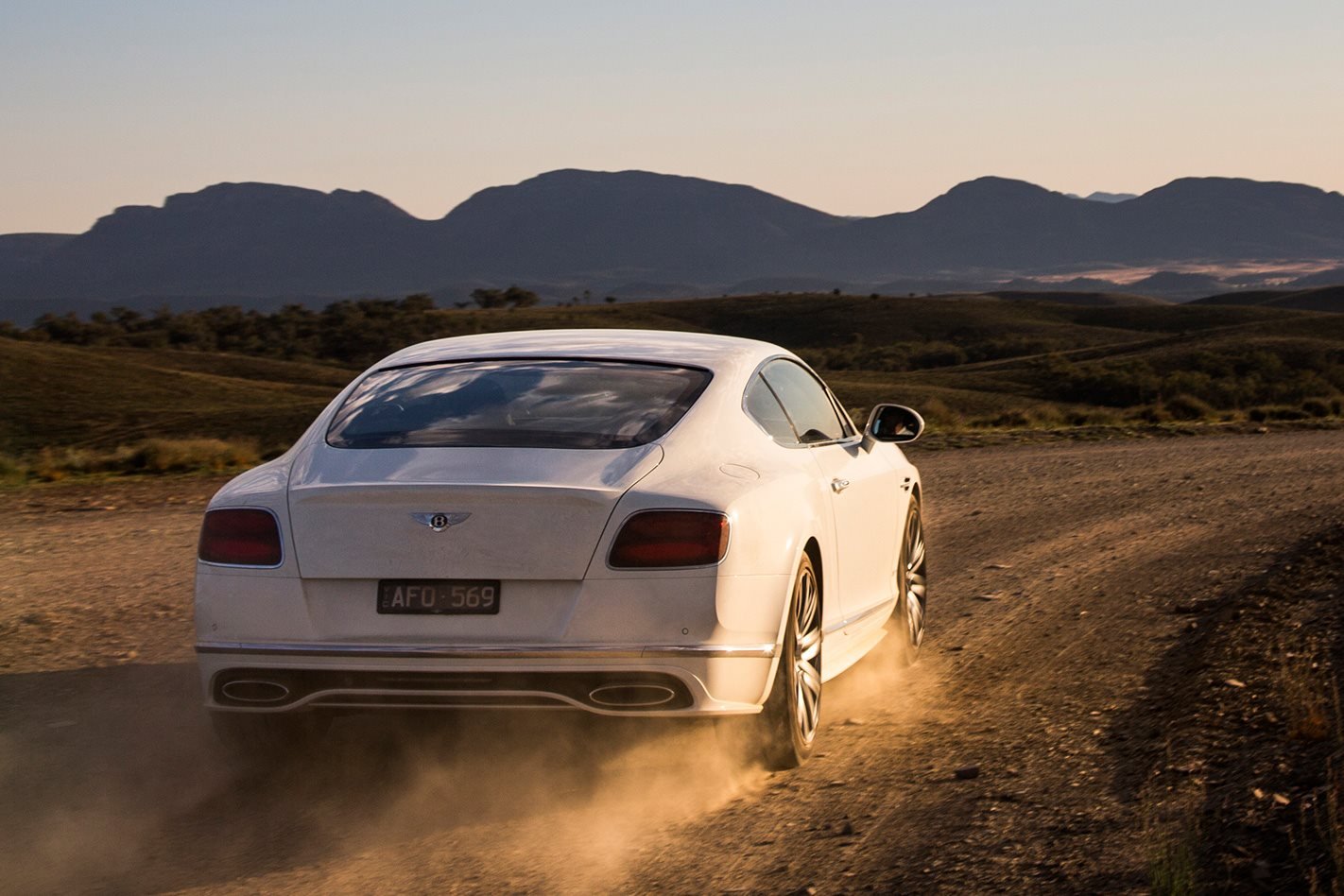Pommie Ben Oliver reckoned our 297km/h on unrestricted Northern Territory roads in an FPV last year was a bit soft, and figured a Bentley Speed could give it a handy touch-up.
AS THE Bentley heads beyond 300km/h its handmade, leather-swathed cabin fades out and my perception zeroes in on its fundamentals until it feels race-car basic. I remain very aware of the steering wheel. The two-lane black-top ahead might be laser-straight and flat, but the surface ain’t level.
Above 250km/h each dip and pothole causes the wheel to kick back and the car to drift a foot or two to either side. Nerves make me want to strangle the rim and it’s a conscious effort to keep my grip loose. The constant, precise corrections required are small, but a lot bigger than I’d like to be making at this speed.

Up to 280km/h, I have to force myself not to follow my progress on the dials. Above that speed, I have no desire to. My gaze is fixed outwards. However, although I ought to be able to see the five kilometres to the horizon, there’s a solid heat-haze reflecting the sky onto all but the first 200 metres of road, so it looks like I’m constantly approaching a crest.
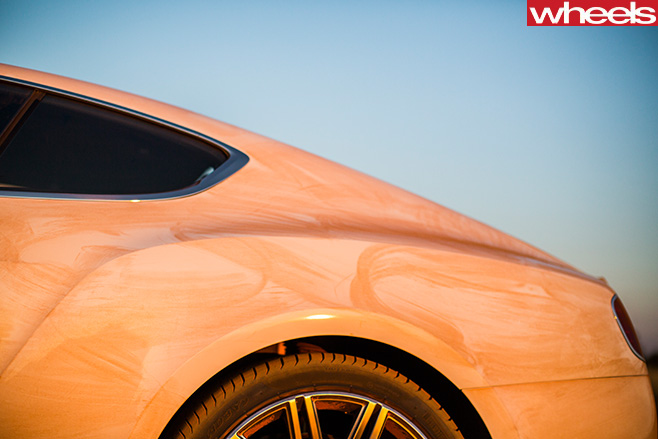
And I keep thinking about the brake pedal, because I would very much like to use it. At this speed you need to act quickly but never suddenly, and I’m already planning how I’ll roll off the gas and gently squeeze the brake when one of us – me or the car – runs out of heart.
There are now plenty of cars that will do 300km/h or more, but very few places where you actually can. The opportunity is so rare and the experience so fleeting that you can never get used to it; you always feel like you’re transgressing the laws of nature. But I’m not breaking the law.
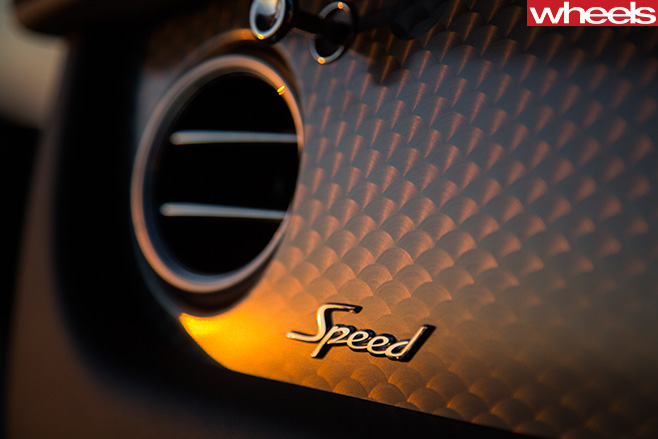
The Territory has extended both middle fingers to the global trend towards lower speed limits, greater regulation, less responsibility for the driver and eventually autonomous cars. Germany still has its autobahns, but the percentage of the network that is derestricted is shrinking, and opinion polls and party policies increasingly back a blanket limit. The Northern Territory is the only place in the world that has turned against the tide.
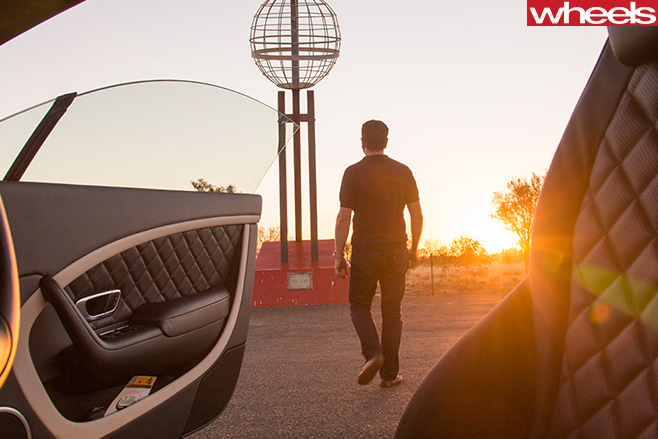
I wanted to ask the locals and the police what they thought about the ‘open’ limit, and what speed they choose to drive at. I wanted to find why this is happening here, and nowhere else. And I wanted to mark this moment, this last hurrah for speed and personal responsibility, with a big number.
As a Brit I think in miles, and 200mph (322km/h) is our big benchmark. Despite Europe’s autobahns and test tracks, it remains a very difficult target. Even if you have the car, the autobahns are usually too congested to do it safely in daylight hours. There are only a handful of test tracks at which you might sustain that speed, and they’re not open to the public.
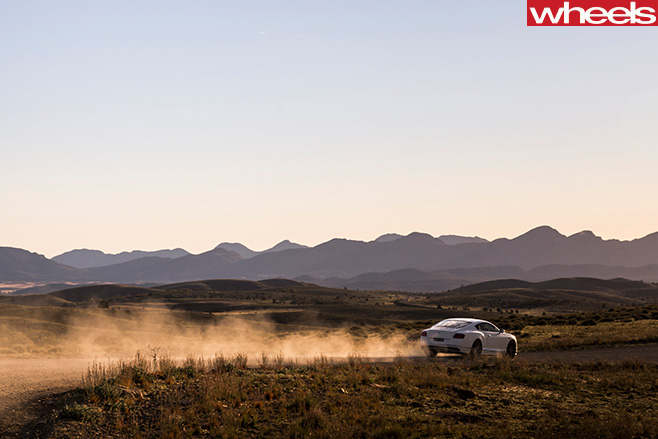
Even before I’d landed, I found one reason why this is happening in the Northern Territory and nowhere else. We Europeans don’t get that Australia is a coastal country. You can fly for hours across the Red Centre and from the cloudless sky you won’t see a single human mark on the red earth as it unrolls endlessly beneath you. The NT has a lower population density than anywhere bar Greenland and Antarctica. Even at 200mph you’ll struggle to find anyone to hit.
Having collected the Bentley Continental GT Speed in Alice and scarfed the finest burger I’ll ever eat in Monty’s, I head north up the Stuart to the start of the open-limit zone. A map is not required.
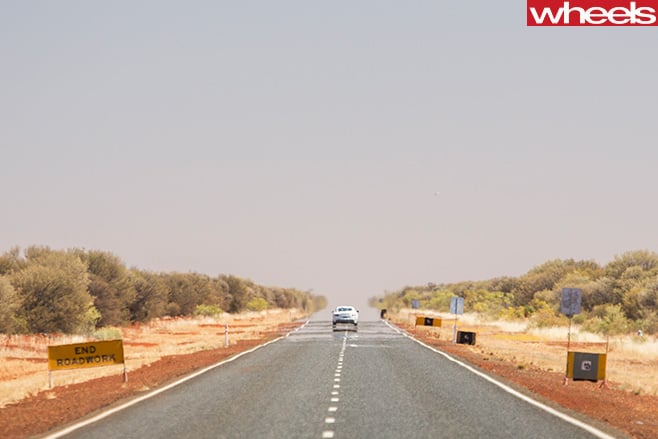
But there’s good reason for doing it in this car, name aside. The Speed is the fastest road car Bentley has ever made and it’s a better car for the job than a hard-riding, fragile Italian. Its all-wheel drive and air springs offer supercar performance with all-condition usability; this is the secret of an 11-year success that has been transformational for the brand.
The Continental has always been engineered to do these speeds, even if it seldom will, and the weight penalty this brings caused many of our criticisms of the car. The lighter, more agile V8 is our preference now, but if you want to do 200mph you need the full-fat W12. It’s good to finally drive this car as it was engineered to be driven.
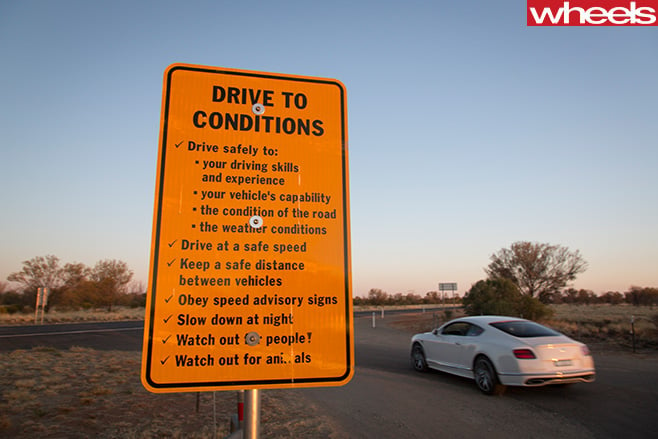
So what speed did the conditions suggest? This isn’t a free-for-all; you can still be jailed for driving “carelessly, recklessly or at a speed or in a manner that is dangerous to the public”, so it wasn’t 300km/h all the way. But you can let your car run out to a speed where its capabilities and the road and the weather and your skill find a comfortable balance.
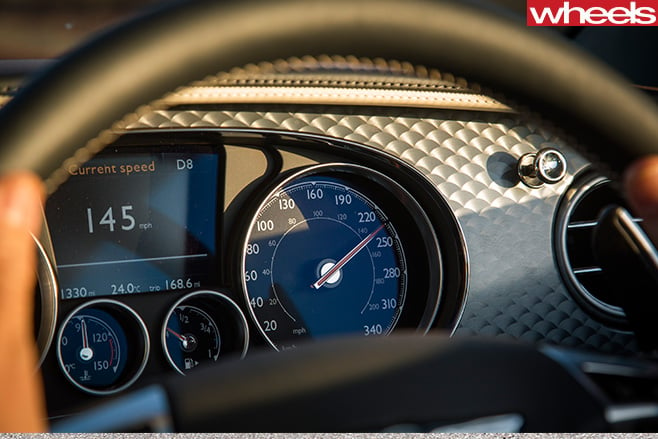
The occasional bend is well signposted and in a few places there’s a speed limit through a junction or a tiny settlement. But mostly the Stuart just runs arrow-straight across the flat red dirt, flanked by patchy bleached grass and low, sage-coloured bushes. There’s little to measure your progress against, other than the wedge-tailed eagles wheeling overhead.
The ‘traffic’ is mostly road-trains, farm utes and foreign backpackers in crappy vans, and you can go for minutes on end without seeing another vehicle.
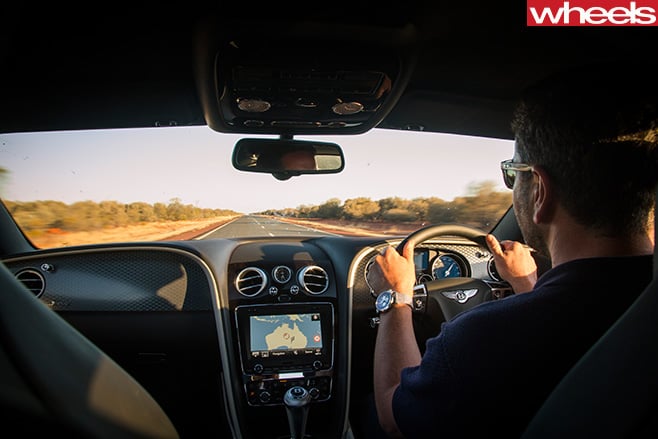
You can see the benefit for Territorians who have to make this 1500km trip regularly, and for who even a 160km/h cruise might cut two tired hours from the end of a 12-hour trip. I want to ask them how they use their freedom, but first I have to find one. Beyond Alice Springs, it’s lonely country out here.
We stop at Ti Tree, a roadhouse about 200km north of Alice. Inexplicably, its claim to be Australia’s most central pub isn’t attracting many customers. The few people who have stopped are mostly those backpackers. The staff running the shop and bar are young and all from the UK. Have they seen many fast cars filling up here, taking advantage of the open speed limits? “Not really,” one tells me. “I think we saw a Lamborghini once.”
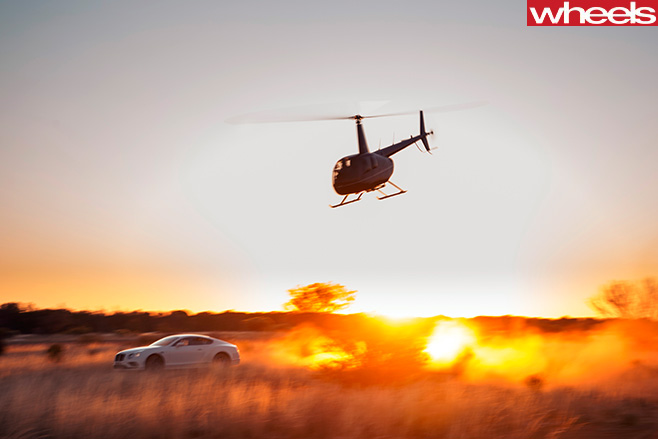
Most interestingly, the average speed, given a free choice, is between 133 and 139km/h – barely more than the old limit. One officer notes that few people up here have cars that can do much more than 130km/h, and for almost everyone the fear of burning more gas outweighs the temptation to go fast. He also confirms that almost nobody comes to the Stuart Highway to engage in hooning. Unless you live here, it’s just too far away.
But what is it about Territorians that made them elect a party that promised open limits when the rest of Australia is so obsessed with speed? “I think there’s a sense of liking to be a little bit different in the Territory,” NT transport minister Peter Chandler tells me. “I think the average Territorian doesn’t much like the South, and doesn’t like much being told what to do. We are a little bit different. I see this as just giving back a right that we once had.”
One last question to answer. What speed will the Speed do? Bentley has wisely hired race legend John Bowe to drive the car in their film (above), partly on the strength of his experience piloting the FPV GT-F to 297km/h here for Wheels last year. Now he is (bravely) in the passenger seat next to me, watching the big GPS speed display stuck to the screen, working the stopwatch and spotting the active wildlife.
Bowe drove the car down the same stretch for the film yesterday and says it’s fine, but rough at the far end. The cops know what we’re doing and are cool with it, so long as we hold the traffic at the far end of our 13km stretch so there’s nothing coming in the opposite direction. The traffic is so light that we rarely inconvenience more than three cars. And at flat-chat it doesn’t take the Bentley long to get to the other end.
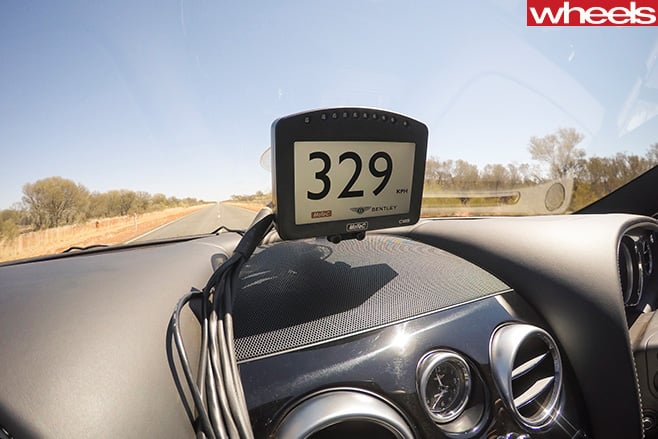
Once the chopper has confirmed all is clear, I mash the throttle. After just five kays and 1min 16sec we hit 200mph. Another 8km can only add 4mph to the Motec display. In gusting wind, and with the Bentley’s steering kicking back furiously and its fine ride quality disintegrated, this feels quite fast enough. 204mph (329km/h) on a two-lane public road. Astonishing.
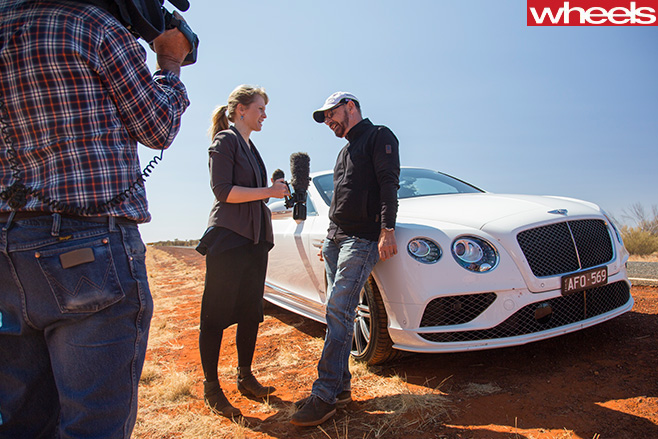
John Bowe was the hired gun for Wheels when we maxed-out an FPV GT-F last year – and for the Bentley speed run up the Stuart Highway – so he’s the only person who can acurately compare the old record run and the new one.
“The Falcon took a lot longer to wind up. Over about 260, it generated front-end lift and became light; not dangerous, but light. And the faster it went the lighter it got. So you had to be very gentle with it, whereas the Bentley didn’t generate any front-end lift at all.
“Without knowing much about the aerodynamic program that was developed for this car, it’s obviously been pretty good. It was very solid, despite the fact that we had much more wind than we had with the Falcon.
“It’s a very impressive car, but it’s not like you drive along one-handed doing 329km/h. If you have a crash, it’s going to be like a plane crash.
“I don’t advocate for a minute that people should come up here and try to do 300 kays an hour. But to drive along this stretch of road in this car and do 140 or 150, it’s just as safe as a church.”
Opposition remains
“They’ll have blood on their hands,” Harold Scruby, chief executive of the dull-sounding Pedestrian Council of Australia, said of NT’s open limits. “This is government by hillbilly.”
Ian Faulks, the academic who was the Territory’s road safety expert under the previous administration, called it “a political exercise” by the Country Liberals, rather than “an evidence-based decision”. He points out (correctly) that you can’t compare “an undivided rural two-lane road with no passing lanes, no median barriers, unsealed shoulders, and subject to desert conditions” to ‘first-world’ roads like the autobahns.
The Country Liberals said they had four studies that supported lifting the limit, but declared them confidential.
Even the local motoring association and the Northern Territory Police Association have officially opposed the policy.
As I arrived, the Country Liberals announced they would extend the trial section to 336km, and eventually to most of their highways. But transport minister Peter Chandler admitted that their freedom might not last if the federal government steps in.

